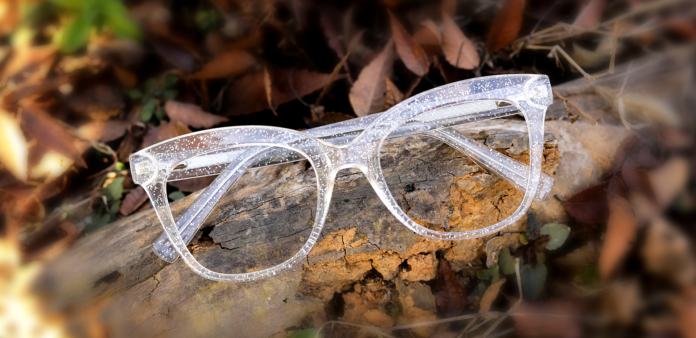Eyeglass frames are more than just a practical component of your eyewear—they play a crucial role in defining your look and ensuring comfort throughout the day. With a variety of styles, materials, and designs available, choosing the right frames can enhance both your vision and your personal style. This article explores the different types of eyeglass frames, their benefits, and tips for selecting the perfect pair.
Types of Eyeglass Frames
Eyeglass frames come in various shapes, materials, and styles, each offering unique benefits and aesthetics. Here’s a breakdown of the most popular types:
1. Full-Rim Frames
- Overview: Full-rim frames encase the lenses completely, providing a bold and structured look.
- Materials: Often made from metal, plastic, or acetate.
- Benefits: Offers maximum lens protection and durability, available in a wide range of styles and colors.
2. Semi-Rimless Frames
- Overview: Semi-rimless frames have a partial rim that holds the lenses in place, leaving the top portion of the lenses exposed.
- Materials: Commonly made from metal or a combination of metal and plastic.
- Benefits: Provides a sleek and lightweight appearance while maintaining some of the durability of full-rim frames.
3. Rimless Frames
- Overview: Rimless frames have no visible rim around the lenses, giving a minimalistic and unobtrusive look.
- Materials: Typically made from lightweight metals like titanium or stainless steel.
- Benefits: Offers a lightweight and modern aesthetic, with minimal visual impact.
4. Cat-Eye Frames
- Overview: Cat-eye frames have an upswept shape that extends outward at the temples, creating a vintage, feminine look.
- Materials: Usually made from acetate or plastic.
- Benefits: Adds a touch of retro glamour and can enhance facial features.
5. Round Frames
- Overview: Round frames feature circular lenses and are often associated with a vintage or intellectual style.
- Materials: Commonly made from metal or acetate.
- Benefits: Complements various face shapes and adds a distinctive, classic touch.
6. Square Frames
- Overview: Square frames have a geometric shape with straight edges and sharp angles.
- Materials: Available in metal, acetate, or plastic.
- Benefits: Offers a bold and modern look, suitable for balancing rounded facial features.
7. Oversized Frames
- Overview: Oversized frames are larger than traditional frames, covering more of the face.
- Materials: Typically made from plastic or acetate.
- Benefits: Provides a fashionable and dramatic appearance, and offers additional lens coverage.
Benefits of Eyeglass Frames
Choosing the right eyeglass frames can offer several benefits beyond just holding your lenses in place:
1. Comfort
The right frames ensure that your glasses fit comfortably on your face without causing pressure or discomfort. Adjustable nose pads and flexible temple arms can enhance the fit and comfort.
2. Style
Eyeglass frames are a key element of personal style. They come in various shapes, colors, and materials, allowing you to express your individuality and complement your wardrobe.
3. Durability
Quality frames are designed to withstand daily wear and tear. Materials like titanium and acetate are known for their durability, ensuring that your glasses last longer.
4. Functionality
Frames play a critical role in holding your lenses correctly. The right frame ensures proper alignment and positioning of the lenses, which is essential for effective vision correction.
How to Choose the Perfect Eyeglass Frames
Selecting the right eyeglass frames involves several considerations to ensure both style and function:
1. Face Shape
Different frame shapes complement various face shapes:
- Round Faces: Angular frames like square or rectangular can add definition.
- Square Faces: Round or oval frames can soften sharp angles.
- Oval Faces: Most frame shapes work well, but try to balance proportions with geometric or oversized frames.
2. Frame Material
Consider the material based on your lifestyle and preferences:
- Plastic/Acetate: Available in a variety of colors and patterns, and often more affordable.
- Metal: Sleek and durable, often adjustable for a better fit.
- Titanium: Extremely lightweight and strong, suitable for a high-performance option.
3. Lens Type
Ensure the frames are compatible with your lens type, whether single vision, bifocal, or progressive lenses. Some frames are designed specifically for certain types of lenses.
4. Lifestyle Needs
Choose frames that suit your daily activities. For example, if you have an active lifestyle, opt for durable and flexible materials. For frequent digital device use, consider frames that can accommodate blue light filtering lenses.
5. Personal Style
Select frames that align with your personal style and preferences. Consider factors such as color, pattern, and overall design to find frames that enhance your look and complement your wardrobe.
Care and Maintenance
Proper care will extend the life of your eyeglass frames and ensure they remain in good condition:
1. Regular Cleaning
Use a microfiber cloth and lens cleaner to gently clean your lenses and frames. Avoid using abrasive materials or harsh chemicals.
2. Proper Storage
Store your glasses in a protective case when not in use to prevent scratches and damage.
3. Avoiding Harsh Conditions
Keep your frames away from excessive heat, moisture, and harsh chemicals to maintain their integrity and appearance.
Conclusion
Eyeglass frames are an essential component of your eyewear, offering both functional and stylistic benefits. With a variety of styles, materials, and designs available, you can find frames that not only improve your vision but also enhance your personal style. By choosing the right frames and taking proper care of them, you can enjoy both comfort and fashion in your daily life.















